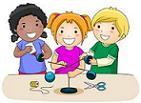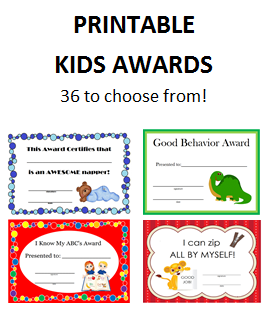Preschool Science Activities

Preschool science activities do not have to be complicated in order for children to learn. Sometimes simple really is best.
All of the science activities in this section can be used alone or as part of a theme. Either way, children are fascinated learning about the way the world works.
Use the preschool science activities listed below to enhance the curriculum in your home based daycare.
_________________________________________________________________
Moving Shadow
During a sunny morning, have the children stand in a straight line along the edge of the driveway. Use sidewalk chalk to trace around their feet, and then around the shadows that their bodies make.
In the afternoon, go back out and have them place their feet in the same spot. Did their shadows change places? That’s because the sun moves during the day. And because light always travels in a straight line, if the sun moves, their shadow will move also.
Preschool Science Activities
_________________________________________________________________
What else can make a shadow?
Use different objects to show that light must be blocked to create a shadow. Try using a tennis racquet. Because the sun can shine through the center of the racquet, you’ll have the handle and outer shell forming a solid shadow and the netting will create shadow free areas. Try using clear transparency film (the type used for overhead projectors). Because they are clear, the light is able to go right through them, and no shadow will appear.
Something simpler?
Make a sundial. Place some clay in a small bowl, and stand a pencil upright in the center. Place the box in a window that receives direct sunlight, and watch the shadow move around the box.
Shadow puppets
Darken the room, use a bright flashlight, and show the kids how to create animals with your hands. Or, make cardboard puppets attached to a stick. Shine a bright light on a wall and hold the puppets between the light and the wall to create shadows. Experiment by moving the puppets back and forth, closer or farther from the light, slowly turning them sideways, etc.
Make Your Shadow Move
Darken the room, and use a bright flashlight. Have one child create a shadow. Ask the child to try making their shadow bigger or smaller. Can they touch their shadow, or shake hands with their shadow? Can they make their shadow turn in a circle, or hop, or stand on tippie-toes?
_________________________________________________________________
Trapped Sound Waves
Use two paper cups for this experiment. Glue cotton balls to the inside of one cup covering the bottom and sides. Then, blow a whistle into the empty cup, and then the one with cotton. The first will make a loud whistle, the other a muffled sound. This is because the cotton balls have tiny spaces between them and the sound waves get trapped in those spaces.
_________________________________________________________________
Colored Carnations
Put water in a small vase. Add 10 to 20 drops of food coloring. Trim the stem of a white carnation and place it in the vase. Use a couple of carnations and vases using different colors. The water will travel up the stem of the plant to the flower, making the carnation the color of the water.
*This works well with celery too. Simply trim off the bottom and place in a glass.
_________________________________________________________________
Color Mix
Pour one cup of milk in a bowl. Make sure you do not jiggle the bowl during the experiment. Add three drops of red food coloring to one edge of the bowl. In one third increments add three drops of blue and three drops of yellow. Place on drop of dish soap in the center of the bowl. The dish soap will spread out on the surface of the milk causing the primary colors to form secondary colors.
_________________________________________________________________
Float or Sink Game
Fill a bucket ¾ full of water. Assemble items and drop them one at a time into the bucket. Ask the children first whether they think the items will sink or float. Try a toy boat, paper clip, pencil, raw egg, nail, apple, or rubber ball.
*Some preschool science activities work best when the children are fully involved in the experiment. With this one, they'll be scrambling to find different items to try.
_________________________________________________________________
Spinning Ball
Place a small rubber ball on a table. Place a glass jar over the ball so that the ball is inside the mouth of the jar. Move the jar around in a circular motion on the table. When the rubber ball is spinning inside the jar, lift up the jar. The ball will continue to spin.
_________________________________________________________________
Play with Magnets
Draw a curvy road on a piece of light cardboard. Place a paper clip on the start of the road. Hold the cardboard up and using a magnet underneath try to move the paper clip along the road.
OR… Fill a glass with water. Drop a paper clip in the water. Use a magnet on the outside of the glass to try to get the paper clip to the top.
_________________________________________________________________
Suspend a Paper Clip
*This is one of those preschool science activities that the kids will want to try themselves. Be prepared to pass the jar around.
You’ll need a clear jar with a lid. Start with a piece of string about the length of the glass jar. Tie one end of the string to a paper clip. Tape the opposite end of the string to the bottom of the glass jar. Tape or glue a magnet to the inside of the lid. Place the lid on the jar and turn the jar upside down. Now, very carefully, turn the jar right side up. The paper clip will be pulled by the magnet. The paper clip will appear to be floating in the jar.
_________________________________________________________________
Looking for more preschool science activities? Simply choose another page...
_________________________________________________________________













